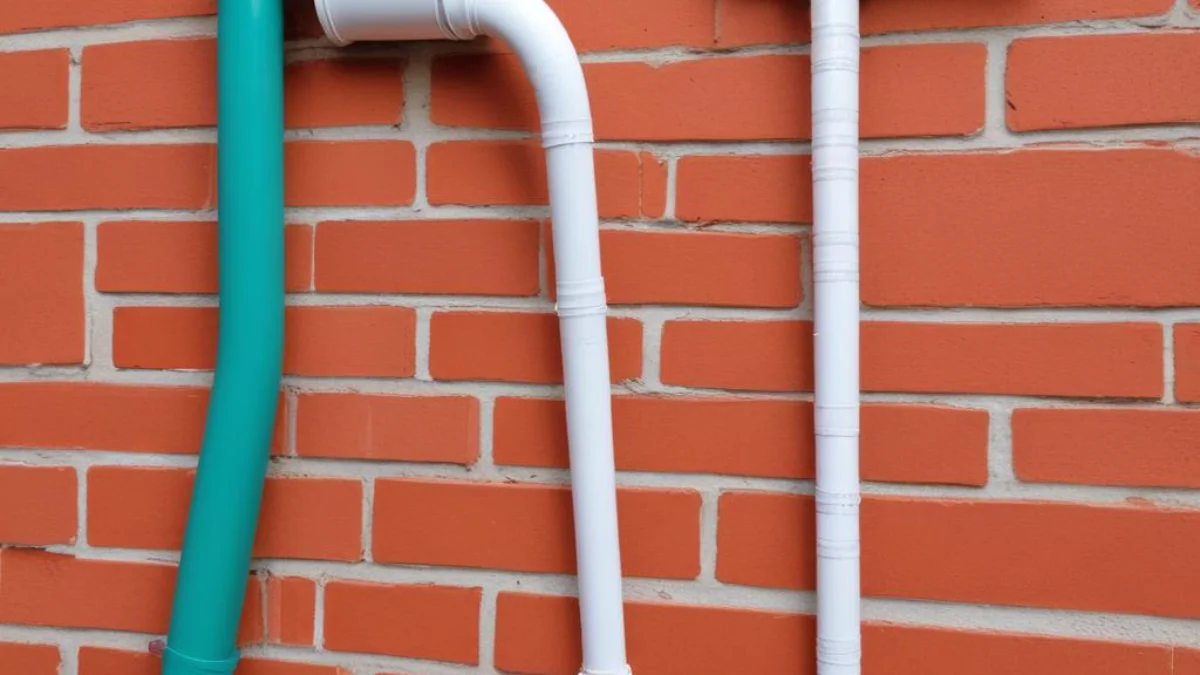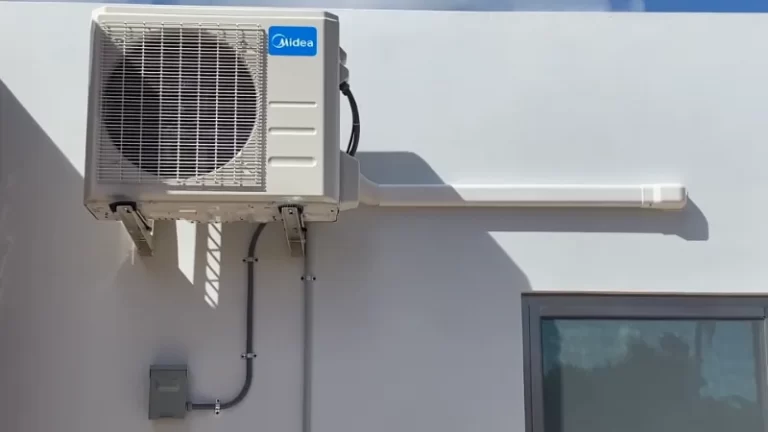AC Drain Pipe Facing Up? Don’t Panic! Here’s the Fix
You glance at your outside air conditioning unit and notice something odd. The AC drain pipe, the line responsible for carrying condensation away from your home, is facing up towards the sky. This gravity-defying sight can be alarming, leaving you to wonder if this is a serious problem. Is your AC about to flood your home?
An AC drain pipe facing up is a common issue that can lead to significant problems if ignored. Understanding the reasons behind this incorrect installation and how to fix it is crucial for every homeowner. This comprehensive guide will walk you through the causes, the potential damage, and the exact steps to ensure proper drainage and protect your home.
You'll Learn About
Why Your AC Drain Pipe’s Direction Matters So Much
The primary function of your AC’s condensate drain line is to remove the moisture that your system pulls from the air during the cooling process. This water collects in a drain pan and then flows through the PVC pipe to a safe disposal area outside. For this to happen, the pipe must have a consistent downward slope, relying on gravity to do the work.
When the pipe faces upwards, it directly obstructs this natural flow. Water cannot travel uphill without assistance, leading to a cascade of problems that can impact your system’s efficiency and your home’s structural integrity. Ignoring this seemingly small detail is a recipe for costly repairs down the road.

The Core Causes of an Upward-Facing Drain Pipe
An AC drain pipe rarely ends up facing upwards by accident. This issue typically stems from a few key causes, ranging from installation errors to intentional but misguided modifications. Understanding the root cause is the first step toward a permanent solution.
Improper Installation: The most frequent culprit is a simple mistake during the initial AC installation. A technician might fail to ensure the correct downward slope, or the pipe may settle or shift over time due to an insecure mounting. Building codes, like the International Mechanical Code (IMC), mandate a minimum downward pitch of at least 1/8 inch per foot of pipe to ensure proper gravity-fed drainage.
Misguided Pest Prevention: Some homeowners or technicians turn the end of the pipe upwards in a misguided attempt to prevent insects, lizards, or other pests from crawling inside. While the intention is good, this creates a P-trap effect that holds water, blocks drainage, and encourages algae and mold growth, which will eventually clog the line completely.
Underground Drainage Issues: In some cases, the drain line might run underground before terminating. If the portion emerging from the ground is angled upwards, it indicates a problem with the buried section of the pipe, which could be clogged, collapsed, or improperly graded.
The Damaging Domino Effect of Improper Drainage
A drain pipe that can’t drain properly sets off a chain reaction of problems. The consequences can range from minor annoyances to severe water damage that threatens your home’s structure and air quality. Recognizing these signs early is key to preventing a catastrophe.
The first sign of trouble is often water pooling around your indoor air handler or outdoor condenser unit. As the condensate pan overflows, this water has to go somewhere, and it will often leak onto floors, through ceilings, and down walls. This can lead to stained drywall, warped floorboards, and damaged insulation.
Persistent moisture creates the perfect breeding ground for mold and mildew. This growth can occur within the drain pan, along the drain line, and in any part of your home affected by the water leak. Mold spores can then circulate through your HVAC system, degrading your indoor air quality and potentially causing respiratory issues for your family.
When Your AC Shuts Down: The Role of the Float Switch
Modern air conditioning systems have a built-in safety feature to prevent catastrophic water damage. A small device called a float switch (or condensate overflow switch) is located in the drain pan or on the drain line. If water backs up and reaches a certain level, the switch is triggered, automatically shutting down your air conditioner.
If your AC system suddenly stops working, especially on a hot day, a tripped float switch due to a clogged or improperly angled drain line is a very likely cause. While this feature protects your home from a flood, it’s a clear signal that your drainage system needs immediate attention.
Your Step-by-Step Guide to Fixing the Drainage Problem
Correcting an upward-facing AC drain pipe is a manageable task for a confident DIYer. However, if you’re ever in doubt, calling a professional HVAC technician is the safest bet. Here are the steps to restore proper drainage and protect your system.
Step 1: Turn Off the Power
Safety is always the first priority. Before beginning any work on your HVAC system, shut off the power at two locations: the thermostat inside your home and the breaker switch that controls your AC unit in your home’s electrical panel. This prevents the unit from cycling on while you are working.
Step 2: Inspect the Entire Drain Line
Start at the indoor unit (the air handler) and trace the condensate drain line all the way to its termination point outside. Look for any visible clogs, kinks, or low spots (sags) where water could be pooling. Pay close attention to the final few feet of the pipe where the upward turn is located.
Step 3: Correct the Pipe’s Angle
If the upward-facing elbow is not glued in place, you may be able to simply turn it to face downwards. If it is glued, you will need to cut the pipe. Using a PVC cutter or a hacksaw, carefully cut the pipe just before the elbow. This will immediately allow any backed-up water to drain out, so have a bucket ready.
After cutting, you can attach a new elbow fitting that directs the flow downwards, away from your home’s foundation. Use PVC primer and cement to create a secure, watertight seal on the new fitting. Ensure the end of the pipe is at least six inches above the ground to prevent blockages from dirt and debris.
Step 4: Clear Any Existing Clogs
An upward-facing pipe has likely caused a buildup of sludge, algae, and other gunk. You need to clear this out to prevent future issues. The most effective way to do this is with a wet/dry shop vacuum.
Place the vacuum’s hose over the end of the drain line outside and create a tight seal with your hand or a rag. Let the vacuum run for several minutes to suck out the clog and any standing water. You’ll likely hear the blockage come loose. For many homeowners, this is a surprising fix and highlights the importance of regular maintenance. Considering the potential costs of water damage, knowing is drano bad for pipes is essential; harsh chemicals should be avoided in AC drain lines as they can damage the PVC.
Step 5: Flush and Test the Line
After clearing the clog, it’s a good practice to flush the line. Locate the vent tee (a capped, T-shaped pipe) near your indoor air handler. Remove the cap and slowly pour a solution of one part distilled white vinegar and one part water down the line. This helps to kill any remaining algae or mold.
Let the solution sit for about 30 minutes, then flush the line with clean water. Watch the outside termination point to confirm that water is flowing freely. Once you see a steady flow, you can be confident the line is clear. This process is far less daunting than a major repair like an AHS water heater replacement, but it’s just as crucial for home maintenance.
| Problem | Common Cause | DIY Solution | When to Call a Pro |
|---|---|---|---|
| Drain Pipe Facing Up | Improper installation; misguided pest control. | Cut off the upward elbow and replace it with one facing down. | If the pipe is difficult to access or you’re not comfortable with PVC work. |
| Water Leaking Near Indoor Unit | Clogged drain line causing the pan to overflow. | Use a wet/dry vacuum to clear the clog from the outside drain opening. | If the leak persists after clearing the line, or if you see significant water damage. |
| AC Shuts Off Unexpectedly | Float switch tripped due to backed-up water. | Clear the clog in the drain line to allow water to flow again. | If the system doesn’t restart after the line is cleared and the pan is dry. |
| Musty or Moldy Smells | Mold and mildew growth in the drain pan or line. | Flush the line with a vinegar and water solution. | If smells persist, as there may be mold growth in the ductwork or coils. |
Preventing Future Drainage Disasters
Once you’ve corrected the problem, a little routine maintenance can prevent it from ever happening again. Prevention is always simpler and cheaper than a cure, especially when it comes to your HVAC system. Keeping your pipes in good condition is a wise investment. If you’re ever considering a home purchase, always ask should I buy a house with cast iron pipes, as older plumbing systems can present unique challenges.
Monthly Flushing: Once a month during the cooling season, pour a cup of distilled vinegar down the condensate line’s access tee. This simple step helps to prevent the buildup of algae and bacteria that lead to clogs.
Regular Filter Changes: A dirty air filter allows more dust and debris to be pulled into your HVAC system. Some of this debris will end up in the condensate pan and can contribute to clogs. Change your filter according to the manufacturer’s recommendations.
Professional Tune-Ups: Schedule an annual maintenance check with a qualified HVAC technician. As part of their service, they will thoroughly inspect and clean the entire condensate drainage system, catching potential problems before they lead to damage.
Final Thoughts on Proper Drainage
An AC drain pipe facing up is more than just a strange sight; it’s a direct threat to the health of your air conditioning system and the safety of your home. By understanding that drainage relies on gravity, you can see why this upward orientation is a critical flaw.
By taking the steps to correct the pipe’s angle, clear any existing clogs, and commit to a simple preventative maintenance routine, you can ensure your AC runs efficiently and your home stays dry. Don’t let a small installation mistake turn into a large-scale disaster. Take action, restore the flow, and enjoy the cool, worry-free comfort of a properly functioning air conditioner.

